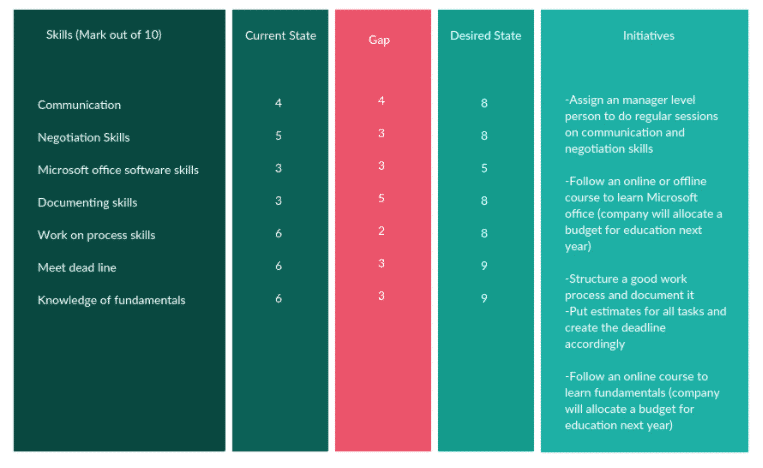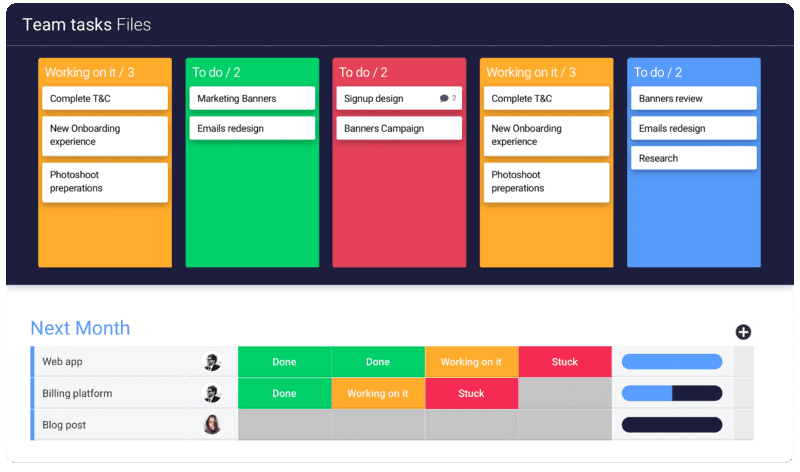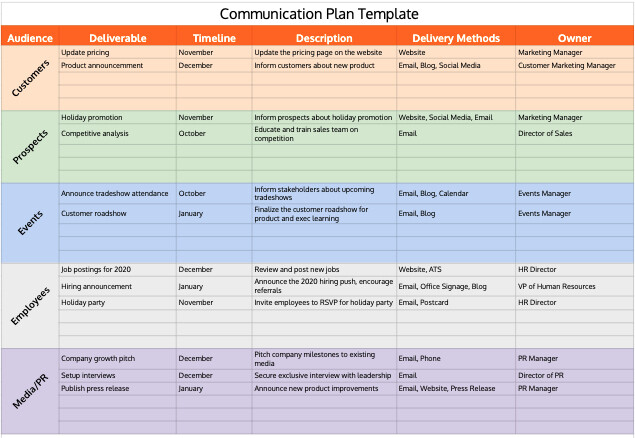Managing a remote team demands a high level of planning and dedication. As an owner of a company or manager of a team, your job is to make sure you and your staff keep a satisfactory level of productivity in order to keep up with the competition. However, when you’re not all working in the same space to actually see everything going on, that can be easier said than done.

As remote work continues to grow, it’s important to know how to effectively manage remote employees. Understanding their top concerns and complaints, keeping them engaged, and using the right collaboration tools are all helpful starts, but we’ll dive into five basic (but necessary) tips to make managing remote employees a win for you and your team.
5 tips to make managing remote employees light work
Whether you’re a franchisee overseeing tons of work-from-home staff members or a small, local team gone virtual, keeping these five tips in your leadership toolbox will make managing remote employees a great experience for you and your employees:
1. Create employee development plans
When you’re working in the same places as your employees, you can easily get a sense of their strengths and areas for improvement. In-office employees may also be more willing to ask questions when you’re right there than they would if you’re a message, call, or email away. This can create a disconnect between you and your remote employees.
An employee development plan (EDP) can help a lot here for both large and small teams. According to Fellow, an EDP is “a roadmap that is created to help employees improve skills in their current position and acquire new competencies and knowledge in order to expand their current responsibilities and maybe even take on new ones.”
How to create an employee development plan
Here’s a blueprint for a suitable EDP:
1. Identify your business goals: What’s your business planning to achieve in the long run? This will help you determine what professional development needs have to be met to achieve your goals.
2. Conduct a skill gap analysis: Determine the skills your employees should have for achieving business goals and analyze the current state of your employees’ skill set by giving them tests, surveying them, etc. You can take your performance appraisal to the next level and use a performance management tool.

3. Talk to employees: Apart from the objective tests and analyses, you need to talk to your employees and see what they think of their skills and how to improve them. This will equip you to help them achieve their personal goals as well.
4. Deciding on training: Based on your findings from the previous steps, you should be able to devise a tailored training program for your employees. Giving employees special assignments and projects, working with a subject matter expert through one-on-one coaching or online courses, and creating local networking groups are some suggestions.

5. Create a written plan and revise if necessary: Writing down your plan makes it possible for your employees to know the objectives and milestones, assess their performance, and understand their shortcomings. A written plan helps you to track your progress and make necessary changes based on the results you’ve got.
2. Clearly outline objectives, milestones, and deliverables
As a manager or small business owner, you are responsible for clarifying project objectives, milestones, and deliverables for your remote team members. But can your team understand them and stick to them the right way?
Failing to understand objectives, milestones, and deliverables makes room for a lot of guesswork and misunderstanding. In this situation, communication is key.
Gallup’s research shows that “knowing what’s expected” from employees is perhaps the most basic employee need and is vital for employee performance. So you’ll want to keep your business organized by making sure your employees have a good understanding of your objectives.
How to best outline objectives, milestones, and deliverables
Use the SMART framework to convey them in the best possible way. SMART stands for:
- Specific
- Measurable
- Achievable (or attainable, actionable, appropriate)
- Realistic
- Time-bound (or timely, traceable)

Objectives are the end goals a project is trying to achieve. These are the results the whole team is responsible for. Milestones are the places in a project’s timeline that mark the end of a phase or achievement, while deliverables are what you expect individual team members to complete and deliver in a period of time.
Be sure you’re clear on these aspects before your team starts a project. That way, they’ll have a head start on understanding project objectives, milestones, and deliverables so that they can do their best to achieve them.
Simply expecting your team members to understand key objectives by reading a one-time proposal is a big mistake. To make sure you have a team that understands these three pillars, you need to constantly talk with them and help them with understanding their responsibilities–especially in a remote environment. Mention top-level objectives on your team calls, check-in with employees regularly on specific deliverables, and celebrate key milestones that are hit on time.
3. Preach prioritization
Maybe the most important achievement of managing remote employees is prioritizing the workload and focusing on the most important task at hand. A team is typically involved in multiple projects at the same time and each of these projects has various tasks.
Without prioritization, your team would only be killing time without any meaningful progress.
How to help your remote employees prioritize tasks
One way to prioritize important tasks and projects is by using Kanban boards. According to DPM, “the Kanban method allows you to minimize multitasking, streamline your work in progress efficiency, and improve the speed and quality of the work your collaborative and self-managing team produces.”
A Kanban board is divided into various workflow states such as “To-do,” “Doing,” and “Done.” These buckets are then filled with tasks that are currently in those states.
Kanban’s visualization makes prioritizing tasks easy for your remote employees. It also helps reduce the average time needed for completing these tasks.
This is a simple Kanban board with some tasks in their specific workflow states on Monday.com.

While this can help your remote employees stay on track with projects and key deliverables, it can also help you in managing remote employees by giving visibility into where specific tasks are in the pipeline. You can also share your own task board with your team to promote transparency so they can understand what you’re doing in your day-to-day.
4. Always remember communication and collaboration
No matter what remote team management methodology you choose to work with, the key to success is effective communication and collaboration. After all, teamwork is all about collaboration.
And, one of the biggest complaints remote workers have is a lack of both communication and collaboration.
There are various ways to improve communication and collaboration when working remotely. Being clear on your expectations is the most important step—just like how you would be when communicating with customers. As Dmytro Okunyev, the founder of Chanty, explains:
“There’s no agreed-upon etiquette in the teams which were forced to go remote, and this is something that should be addressed. If you have driving rules, why not develop a set of rules for remote team communication? These rules will add clarity to any team.”
Clearly, it’s no secret that clear communication is vital to managing your remote employees. Next, let’s look at how you can apply this concept to your team.
Ways to improve communication and collaboration
Experts recommend having a communication plan to guide team members through.

In a communication plan, you need to define what should be communicated to who, and how and when it should be communicated.
Make a list of people involved in the project along with their contact information. Make sure people understand the goals for communication and what they should deliver. You should also define communication methods (phone, text, video, etc.) and how often it should be done.
Scrum is a project management methodology that focuses intensively on effective communication and collaboration. It encourages meetings at various levels:
- Daily meetings that encourage the development team to discuss briefly (15 minutes or less) the challenges they are facing in completing their deliverables.
- Meetings at the end of each milestone or “Sprint” in which team members present their achievements and review them.
- Retrospective meetings in which team members reflect on their past performance and identify potential places for future improvement.
- “Planning meetings” in which team members are encouraged to brainstorm the most efficient ways to do the project phase ahead.
Even if you’re not religiously following Scrum for your projects, it’s a good idea to take advantage of the concept of collaboration and communication it puts forward.
5. Model excellent time management
Time management can be challenging for remote workers, and many are feeling burnt out as they find difficulties unplugging from work while at home. Managers have it doubly difficult as they’re trying to manage their remote team and their own time. This is complicated even further if your remote employees work across different time zones. Scheduling meetings that work for each employee and understanding when employees are working and when they’re offline can be a headache.
Time management tips
Here are a few quick tips if you’re looking to improve your (or your team’s!) time management in a remote setting:
Make a plan: The goal of planning before execution is to reduce possible errors, define roles and assign tasks, determine objectives and milestones, all of which help reduce the time spent on completing the project. This can apply to any work projects you have as well as your plan for managing your employees.
Related: Need more ideas of how to execute your planning? Download our free small business planning template to help you meet your brand’s goals and objectives.
Limit multitasking: Multitasking is demanding both at the personal and team level. That’s why you need to limit multitasking. Prioritize the tasks that should be done and assign them to team members in a way that reduces burn-out. Limiting multitasking is a top time-saving technique.

Don’t micromanage: As much as we like to take control of every task we assign to people and encourage perfection, it only frustrates team members. Believe in your team members and let them complete tasks the way they feel comfortable. You’d be amazed at how efficiently and timely the task is completed.
Use the right tools: Using the right collaboration tools is a must these days. It’s nearly impossible to use the phone or email all the time for managing projects and completing tasks.
If you’re new to managing remote employees, you can definitely take advantage of project management tools for small businesses. The possibilities for file sharing, planning, project boards, task allocation and management, and most importantly efficient communication make these tools ideal for time management.
Managing remote employees made easy
When it comes to managing remote employees, thorough training is extremely important. Investing in an employee training program and creating courses with the intention to level up employees’ collaboration skills can make a positive impact on your business’s growth strategy—even when implemented remotely. Use these tips to develop in your remote employees and save yourself from business management stress!
To recap, our five top tips for managing remote employees are:
1. Create employee development plans
2. Clearly outline objectives, milestones, and deliverables
3. Preach prioritization
4. Always remember clear communication and collaboration
5. Model excellent time management
About the author
Mostafa Dastras is a writer at The CX Lead, a community for the architects, designers, creators, and shapers of experience run by the indie digital publishing team at Black & White Zebra. His work has appeared on some top publications such as HubSpot, WordStream, SmartInsights, LeadPages, Sendinblue, and MarketingProfs. Visit his blog, LiveaBusinessLife.
Related Articles
-

12 Types of Marketing Collateral Every Business Needs (+Examples!)
-

29 Crowd-Pleasing Grand Opening Ideas for Your Business (+Tips & Examples!)
-

Campaign Planning: How to Do It Right (+Templates, Tips, & Tools)
-

7 Simple Steps (+Free Template!) to a Growth Strategy That Gets Results
-

9 Ways to Build a Better Brand Reputation

